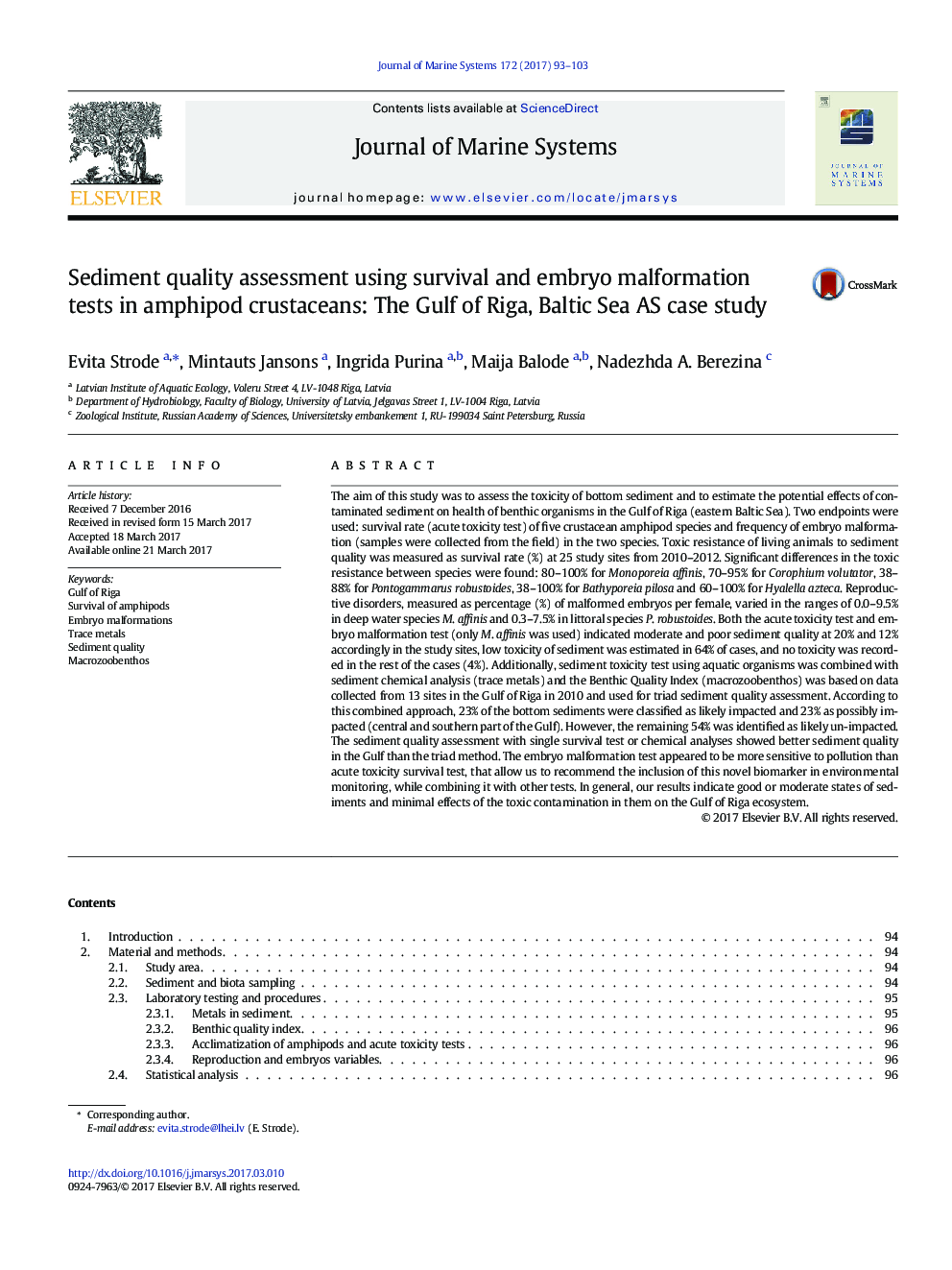| کد مقاله | کد نشریه | سال انتشار | مقاله انگلیسی | نسخه تمام متن |
|---|---|---|---|---|
| 5765993 | 1627258 | 2017 | 11 صفحه PDF | دانلود رایگان |

- Quality of the Gulf of Riga sediment was assessed by various methods.
- Sensitive species of amphipods were recommended for acute toxicity survival tests.
- Embryo malformation tests in amphipods were more sensitive than survival test.
- According to integrated assessment the sediment quality is good or moderate.
- Sediments were more polluted in central part of the Gulf than in littoral zone.
The aim of this study was to assess the toxicity of bottom sediment and to estimate the potential effects of contaminated sediment on health of benthic organisms in the Gulf of Riga (eastern Baltic Sea). Two endpoints were used: survival rate (acute toxicity test) of five crustacean amphipod species and frequency of embryo malformation (samples were collected from the field) in the two species. Toxic resistance of living animals to sediment quality was measured as survival rate (%) at 25 study sites from 2010-2012. Significant differences in the toxic resistance between species were found: 80-100% for Monoporeia affinis, 70-95% for Corophium volutator, 38-88% for Pontogammarus robustoides, 38-100% for Bathyporeia pilosa and 60-100% for Hyalella azteca. Reproductive disorders, measured as percentage (%) of malformed embryos per female, varied in the ranges of 0.0-9.5% in deep water species M. affinis and 0.3-7.5% in littoral species P. robustoides. Both the acute toxicity test and embryo malformation test (only M. affinis was used) indicated moderate and poor sediment quality at 20% and 12% accordingly in the study sites, low toxicity of sediment was estimated in 64% of cases, and no toxicity was recorded in the rest of the cases (4%). Additionally, sediment toxicity test using aquatic organisms was combined with sediment chemical analysis (trace metals) and the Benthic Quality Index (macrozoobenthos) was based on data collected from 13 sites in the Gulf of Riga in 2010 and used for triad sediment quality assessment. According to this combined approach, 23% of the bottom sediments were classified as likely impacted and 23% as possibly impacted (central and southern part of the Gulf). However, the remaining 54% was identified as likely un-impacted. The sediment quality assessment with single survival test or chemical analyses showed better sediment quality in the Gulf than the triad method. The embryo malformation test appeared to be more sensitive to pollution than acute toxicity survival test, that allow us to recommend the inclusion of this novel biomarker in environmental monitoring, while combining it with other tests. In general, our results indicate good or moderate states of sediments and minimal effects of the toxic contamination in them on the Gulf of Riga ecosystem.
Journal: Journal of Marine Systems - Volume 172, August 2017, Pages 93-103